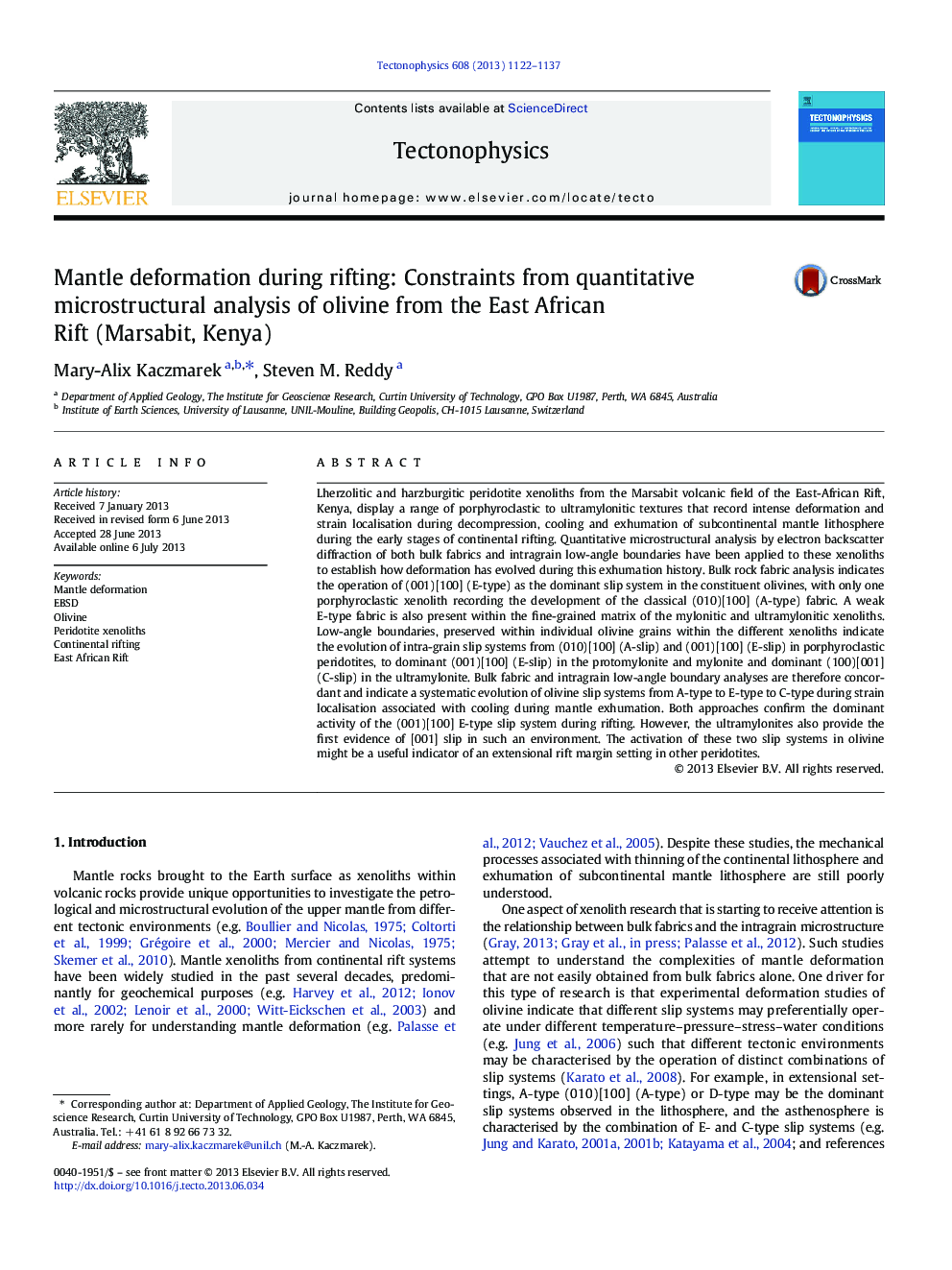| کد مقاله | کد نشریه | سال انتشار | مقاله انگلیسی | نسخه تمام متن |
|---|---|---|---|---|
| 6434047 | 1636779 | 2013 | 16 صفحه PDF | دانلود رایگان |
- Subcontinental mantle (EAR-Kenya) record deformation during exhumation and cooling.
- In rifting environment olivine bulk fabric is dominated by (001)[100] E-type slip.
- Intragrain LAB indicate an evolution of olivine slip systems from A- to E- to C-type.
- Deformation localisation and slip direction change are due to decompression + cooling.
Lherzolitic and harzburgitic peridotite xenoliths from the Marsabit volcanic field of the East-African Rift, Kenya, display a range of porphyroclastic to ultramylonitic textures that record intense deformation and strain localisation during decompression, cooling and exhumation of subcontinental mantle lithosphere during the early stages of continental rifting. Quantitative microstructural analysis by electron backscatter diffraction of both bulk fabrics and intragrain low-angle boundaries have been applied to these xenoliths to establish how deformation has evolved during this exhumation history. Bulk rock fabric analysis indicates the operation of (001)[100] (E-type) as the dominant slip system in the constituent olivines, with only one porphyroclastic xenolith recording the development of the classical (010)[100] (A-type) fabric. A weak E-type fabric is also present within the fine-grained matrix of the mylonitic and ultramylonitic xenoliths. Low-angle boundaries, preserved within individual olivine grains within the different xenoliths indicate the evolution of intra-grain slip systems from (010)[100] (A-slip) and (001)[100] (E-slip) in porphyroclastic peridotites, to dominant (001)[100] (E-slip) in the protomylonite and mylonite and dominant (100)[001] (C-slip) in the ultramylonite. Bulk fabric and intragrain low-angle boundary analyses are therefore concordant and indicate a systematic evolution of olivine slip systems from A-type to E-type to C-type during strain localisation associated with cooling during mantle exhumation. Both approaches confirm the dominant activity of the (001)[100] E-type slip system during rifting. However, the ultramylonites also provide the first evidence of [001] slip in such an environment. The activation of these two slip systems in olivine might be a useful indicator of an extensional rift margin setting in other peridotites.
Journal: Tectonophysics - Volume 608, 26 November 2013, Pages 1122-1137
